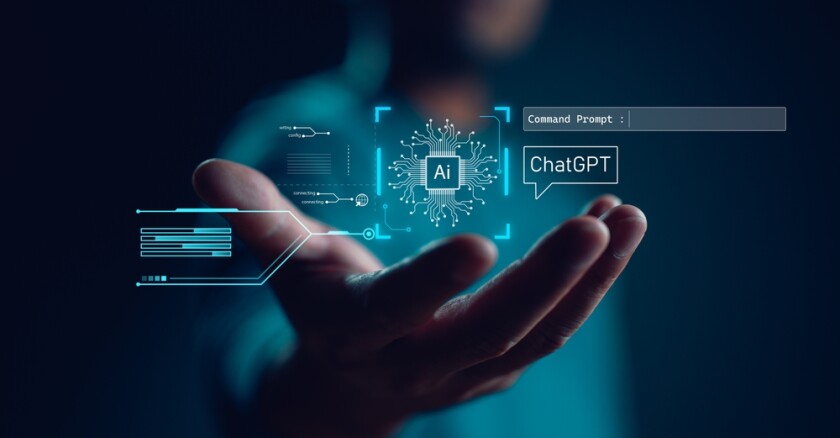After initially banning the technologies, however, now more governments are starting to explore how public professionals can use these content-generation and content-analysis tools to improve governance and, at the same time, provide an important learning opportunity for public professionals.
THE FIRST GENERATIVE AI USE POLICIES
In an effort to turn policy into practice, the team at InnovateUS, a nonprofit, nonpartisan, independent initiative to provide training in digital, data and innovation skills to public professionals, put out a short explainer video to accompany the policy and show how to access and use these new tools responsibly.
Following Boston’s lead, in October New Jersey Gov. Phil Murphy issued an executive order on generative AI pursuant to which the statealso issued a policyto encourage and guide state employees to improve how the state’s government delivers services to New Jersey residents using generative AI. The policy lays out specific ways to draft better memos, translate government-speak into plain English and analyze data for use in policymaking.
New Jersey also made a nation-leading public commitment to educate every public-sector professional on AI: A generative AI training course is slated to launch in early 2024, in collaboration with InnovateUS, which put out another explainer video to accompany New Jersey’s policy and provide hands-on instruction.
USING GENERATIVE AI IN GOVERNMENT: EXAMPLES FROM CALIFORNIA
Embracing the same responsible experimentation approach taken in Boston and New Jersey and expanding on the examples in those interim policies, this November the state of California issued an executive order and a lengthy but clearly written report, enumerating potential benefits from the use of generative AI.
These include:
- Sentiment Analysis — Using generative AI (GenAI) to analyze public feedback on state policies and services.
- Summarizing Meetings — GenAI can find the key topics, conclusions, action items and insights.
- Improving Benefits Uptake — AI can help identify public program participants who would benefit from additional outreach. GenAI can also identify groups that are disproportionately not accessing services.
- Translation — Generative AI can help translate government forms and websites into multiple languages.
- Accessibility — GenAI can be used to translate materials, especially educational materials into formats like audio, large print or Braille or to add captions.
- Cybersecurity — GenAI models can analyze data to detect and respond to cyber attacks faster and safeguard public infrastructure.
- Updating Legacy Technology — Because it can analyze and generate computer code, generative AI can accelerate the upgrading of old computer systems.
- Digitizing Services — GenAI can help speed up the creation of new technology. And with GenAI, anyone can create computer code, enabling even nonprogrammers to develop websites and software.
- Optimizing Routing — GenAI can analyze traffic patterns and ride requests to improve efficiency of state-managed transportation fleets, such as buses, waste collection trucks or maintenance vehicles.
- Improving Sustainability — GenAI can be applied to optimize resource allocation and enhance operational efficiency. GenAI simulation tools could, for example, “model the carbon footprint, water usage and other environmental impacts of major infrastructure projects.”
Because generative AI tools can both create and analyze content, these 10 are just a small subset of the many potential applications of generative AI in governing.
MITIGATING RISKS
California’s report also usefully lays out the potential risks associated with using these new tools, making clear that while there are some new potential harms, in many cases many of the risks are common to the use of any technology. Governments need to be conscious of the fact that tools that enable the easy generation of high-quality content could be misused to dupe consumers and residents.
Perhaps because 35 of the 50 leading AI businesses are in California, as the state's report points out at the outset, it is silent on the risks to governments and those they serve of relying excessively on technologies developed and governed by unaccountable companies, especially when those technologies are procured by public servants without a deep knowledge of the tech.
THE SHIFTING LANDSCAPE: THE DAWN OF A NEW ERA OF AI-ENABLED GOVERNANCE
The cautious yet optimistic adoption of these technologies by cities like Boston and states like New Jersey and California signals a significant shift in the public-sector landscape.
The journey from skepticism to the beginnings of strategic implementation reflects a growing recognition of the transformative potential of AI for public good. From enhancing public engagement through sentiment analysis and accessibility to optimizing government operations and cybersecurity, generative AI is not just an auxiliary tool but a catalyst for a more efficient, inclusive and responsive government.
However, this journey is not without its challenges. The need for transparent and accountable technologies, responsible usage, constant vigilance against potential misuse, and the importance of maintaining a human-centric approach in policymaking are reminders that technology is a tool to augment human capabilities, not replace them.
With responsible experimentation and a commitment to continuous learning, governments can harness the power of generative AI to reshape how they deliver public services. The future of governance is being rewritten, and it's up to us to ensure that this story is one of progress, inclusivity and enhanced public welfare.
Beth Simone Noveck is a professor at Northeastern University, where she directs the Burnes Center for Social Change and its partner projects, the GovLab and InnovateUS. She is core faculty at the Institute for Experiential AI. Beth also serves as chief innovation officer for the state of New Jersey. Beth’s work focuses on using AI to reimagine participatory democracy and strengthen governance, and she has spent her career helping institutions incorporate more participatory and open ways of working.








